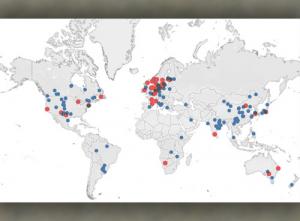Consider Converting to HVDC, Part 1
M. Granger Morgan and Rachana Gururaj are with the Department of Engineering and Public Policy, Carnegie Mellon University. Liza Reed is with the Niskanen Center.
We all know about the war of the currents at the end of the nineteenth century in which George Westinghouse's alternating current (AC) won out over Thomas Edison's direct current (DC) because, using transformers, low voltage AC could be converted to high voltage for efficient long-distance transmission, and then converted back to low voltage for final use.

Most of us also know that in the second half of the twentieth century, limited use of high voltage DC (HVDC) began to appear as an efficient way to move large blocks of power over long distances, such as from the Pacific Northwest down to Southern California over the Pacific Intertie.
What many of us do not know is that recent decades have seen a growing revolution in applications of DC in power systems, both for moving bulk power, but also to play a growing list of other roles.
Early applications of HVDC, such as the Pacific Intertie that moves power from the Pacific Northwest to Southern California, used large, bulky, and very expensive mercury arc valves to perform the switching needed for AC to DC and DC to AC conversions.
However, in more recent years, that technology has been replaced with solid state power electronics — and it is this development, and associated technological progress driven by applications in rail locomotives and more recently electric vehicles, that has been fueling a rapid proliferation of applications of HVDC.

